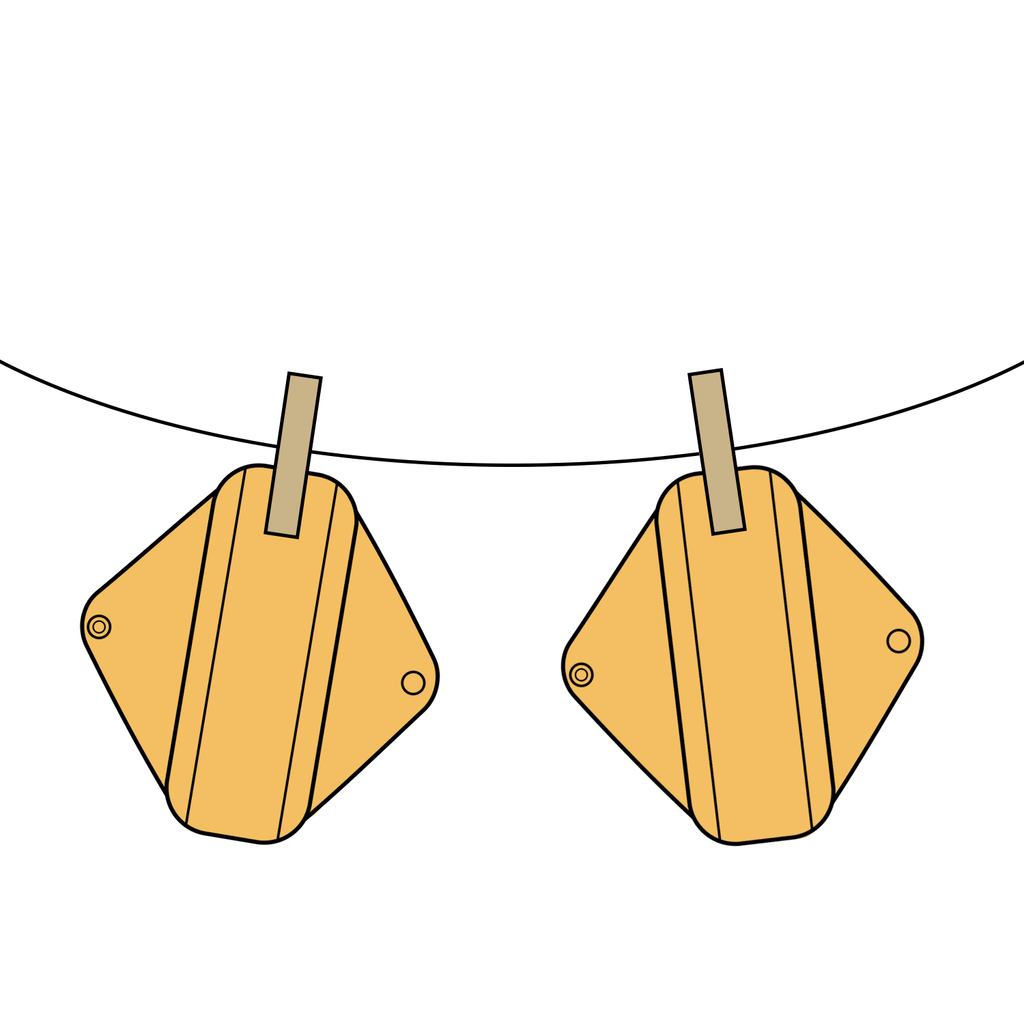One of the questions raised over reusable sanitary pads is how to properly wash them.
It’s easy – you either pop them in your washing machine or you wash them by hand!
Reusable sanitary pads are pretty easy to wash like any other clothes, but there are a couple of extra steps you’ll need to take to ensure they’re absolutely clean and ready for re-use.
Washing Reusable Sanitary Pads is Easy!
As you can see, washing reusable sanitary pads is easy!
Loads of people worry about washing their pads but so long as you’re doing regular washes, it just takes a matter of minutes.
It’s much quicker than walking down a shop or pharmacy to buy new pads, that’s for sure!
The only caveats are that you need to soak them prior to washing AND make sure they’re absolutely dry before storage or re-use.
Line-drying is always the best way to dry reusable sanitary pads. This will dry your pads rapidly whilst also airing them out and naturally disinfecting them with UV light.
But, where this isn’t possible, drying pads on racks next to a radiator are fine. Just make sure you turn the pads through drying to make sure it’s even and thorough.
Remember, reusable sanitary pads will need longer to dry than other clothing as they’re designed to be absorbent.
You can also gently squeeze excess water out prior to drying to speed up the drying process.
With proper washing, reusable pads can last many years!
Here is our guide on how to wash reusable sanitary pads.
Pre-Wash Storage
Prior to washing, you may need to store your sanitary pads in a reusable waterproof wash bag.
Trade To Aid’s reusable pads come with a waterproof bag that can be easily sealed to keep used pads safe before you have a chance to wash them.

1) Rinse or Soak the Pads
To help remove blood stains, soak the pads in a bowl, bucket of water, or sink.
This will help lift blood out of the pads. Don’t scrub or otherwise wash the pads – simply soak them – the longer the better!
You can also add some tea tree oil or 3% hydrogen peroxide to the mix to disinfect and deodorise the pads. Other natural cleansers and soaps are fine, including baking soda and white vinegar.
Stir a small amount into the water and let it soak into the pads. You’ll likely be able to see the blood lift from the pads – don’t worry if there’s some remaining.
The reddish-brown residue remaining on the pads is mostly just the iron in our blood – blood stains can be very stubborn but they’re nothing to worry about.
When you’re ready to wash your pads in the washing machine, drain the water away from the pads.
Prepare the washing machine for a standard 40-degree wash.

2) Wash Your Pads
You can wash your pads in the washing machine with other clothes.
Wash at 40 degrees. This is the sweet spot that will help prevent stains from ‘setting in’ the fabric.
Trade for Aid’s reusable pads are dark, so add your pads to a dark wash.
You can use light detergent or natural soap, but do not use softener as this can leave a residue that affects the absorbency of the pads.
Handwashing is also an option if you prefer (e.g. if you like to save water). Another advantage is that you can work at bloodstains by gently massaging in a natural cleanser or stain remover. Remember to go easy and always rinse thoroughly to prevent leaving any soapy residues.

4) Squeeze Excess Water From Your Pads
Make sure you squeeze all the excess water out of your pads so they’ll dry as quickly as possible.
This is especially important if you’re hand washing your pads, rather than using a washing machine.

4) Dry the Pads
Drying pads thoroughly is extremely important for keeping them dry and hygienic. It’s highly recommended that you dry them outside in a washing line in bright sunlight. Do not tumble dry the pads as it could warp or damage the plastic clips and affect the absorbency of the material.
The UV present in sunlight is an excellent natural disinfectant. Try to place your pads so the soft inside faces the sun, as the sun may fade the pattern on the outside if it is exposed to the sun frequently.
However, if it’s winter and this isn’t possible then drying on a drying rack near a radiator is fine, so long as the pads can dry quickly. They may take a while to dry as they’re obviously meant to be thick and absorbent.

5) Store Your Pads
When your pads are bone dry, you should store them in a dark area like a draw or similar – somewhere moisture tight. An airing cupboard, if you have one, is ideal.

